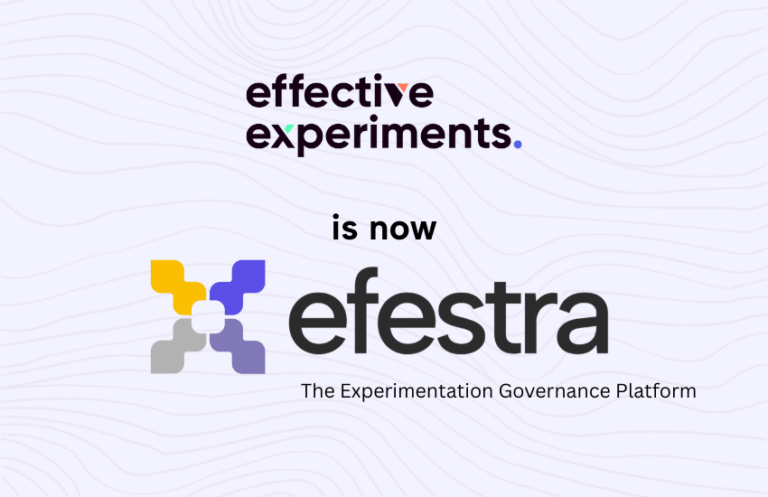What is transparency?
In the optimization world, especially with client-facing agencies, transparency relates to an agency showing their client what they’re working on and what they need to do.
This transparency also needs to occur between teams and individual employees working on a project, and is something you should be taking seriously.
Why is transparency good?
Transparency often cuts problems off before they begin; it saves time, identifies obstacles, and points out workflow bottlenecks that need to be addressed.
If there are unexpected delays, both sides can see where they’re occurring and address those squeaky wheels.
When everyone’s on the same page, it cuts down on excess communication time and uncertainty on both sides. Being clear about what you’ve done to deliver the clients objectives (especially in real time) can eliminate a lot of unnecessary anxiety.

But is transparency innately good?
In short – not necessarily. True transparency is rare. It’s good in a grander sense, but really committing to it is hard. You have to put your ego aside and admit failures openly.
Also, transparency isn’t always rewarded; people don’t want to own up to their failings in front of everyone else, and they’re careful to curate everything to look like a success.
As far as transparency with deliverables, some companies don’t care or don’t understand what goes into getting their results – they just care that they get good results.
Whatever the case, you do have to have some limit to transparency – you can’t be so transparent that your competitors just copy everything you do.
The cost of transparency
One of the largest costs of transparency is the human overhead – finding the right employees, accounting for churn, and training employees to work within a transparent framework where everything they do is on display for the whole company to see.
If you aren’t set up to support your employees in what so some people can be a stressful environment where all of their errors are exposed, and your team members have to always be on top of everything all of the time, that can be very difficult.
It’s not bad to work in that structure, but it takes a paradigm shift to get used to working that way.
Getting ahead of the stress means coaching your staff to operate and live within the transparent system.

Three stages of transparency to clients
There are three different types of transparency toward your clients:
- Vague (e.g.. “Your work isn’t done.”)
- Partial (e.g. “Someone else’s work got done before yours.”)
- Full (e.g. “You lost your place in the work queue because you didn’t reply to us on time.”)
Most people use partial transparency because they don’t want to openly identify, own, or improve their deficiencies. Generally, partial transparency still doesn’t make your company look great and can create confusion. (One exception: some information you can’t disclose for legal or privacy reasons.)
What specifics are normally shared?
Information that exposes what you’ve done to deliver the client objective is the most relevant. This usually includes:
- What you’ve done so far.
- Where you are in the process.
- Problems you’ve encountered and ones you’ve solved.
- Where you’re going next.
- If you’re a transparent company, you’ll also want to discuss any problems or delays you or the client encountered.
Delays and client reactions
In reference to deliverable delays, Tim Stewart of TRS Digital says there could be several reasons their deliverables are delayed:
- They’re one of many clients who need help.
- There was an unforeseen issue which took longer than expected.
- There was an unexpected absence of a key resource.
- Their issue is not first in the service queue.
- The client is late authorizing action of some kind, so someone else’s work goes into the queue ahead of theirs.
With a transparent culture, you have to be honest about your failings. Your client, in turn, must see theirs. Transparency is self-awareness.
This is also why it is hard; it demands a certain maturity from the business, all the staff, and the clients.
If you’re fighting a fire that’s the customer’s fault, showing them that it’s their fault (gently) can help convince them to change the patterns that create obstacles (they didn’t email back on time, they didn’t log in and approve something, there was a use case or customer journey that was not clear etc.)

The truth can hurt, but sometimes it’s the only way to expedite the process. Having the backup data that shows where they’re lagging can help keep them accountable to their own goals.
A centralized work tool can show the client where they’re getting in the way of the process so they can improve and get quicker results for less money. This discussion also opens up the possibility of creating a workflow if they aren’t responding (e.g. escalating the issue to their boss).
Clients will typically react in two ways to this system: they’ll love it, or they’ll hate it.
Those who love it will love it because they can see what exactly is happening and what delays are if there are any. They will also, over time, see the effect of efforts they have taken to improve their skills and working process, showing further value.
Some will react badly and ask why the errors happened, then demand the deliverables immediately.
Transparency is expectation management and account management. The earlier in the client onboarding that you set accurate expectations for the process, the happier you’ll be. Be clear about how you and your client can work well together; it’s two ways.
What’s the best way to run a transparent business?
If you to run a transparent business, you have to have your processes in order.
What does this mean? The best way to be good is to be good already. Before you go any further, stop and look at your set up. (Honestly, even just being seen to be good by outsiders is to be good already.)
Stewart advises:
“Ask yourself: Do you have the right people? Can clients see and quantify effort if there are no regular deliverables? Are your account managers responsible for giving these updates?”
Open kitchen analogy
Many high-end restaurants provide open kitchen viewings for patrons to watch how their food is made. CRO personnel need to operate in the same way.
Part of it is for the show, but the other part is to say “Look how clean and well-run we are; look how we treat your food!”
When a customer asks “Where’s my food?” they can see the chef has 15 meals he’s creating and their meal is somewhere in that line.

These restaurants keep their socially trained staff up front doing their job, as opposed to running back and forth between the customer and the kitchen asking questions that only serve to delay the finished product and annoy the chef.
Account managers and developers should operate like this: account managers act as the front-of-house staff, and the developers should be creating in the back, unbothered.
What if your agency wants to be transparent, but isn’t?
Avoid CSI: Project Management
To start off, write down what you do, and if it isn’t working, ask yourself, “Why did that happen?”
Examine your communication – are there ways it could be streamlined? How do you set customer and employee expectations? Is every employee serving a dedicated purpose and not performing redundant or unnecessary tasks?

You’ll find yourself tracking down email chains, searching five databases, and calling up co-workers. It’s not worth it – save yourself time. Use a centralized tool and constantly be updating it from every department involved.
The customer will be impressed that you work this way and with the accessibility of information.
Transparency when you don’t have daily deliverables
When it comes to test delivery, there are quantifiable points that are regularly delivered on and that constitute some of the value.
But you don’t necessarily have deliverables every day.
What your clients need to be able to see and quantify is the effort. With a centralized tool, your company can show lots of work – even if there isn’t a huge amount of progress – because you can log “discussion about x created a delay, x test is more complicated than y test,” etc.

In a curated, centralized tool, your client can see answers to questions like these:
- How many hours were spent on x task?
- How many tests are live?
- How many tests are in the pipeline?
- Last year we had 30 tests and made x percent – our target this year is 40 tests, how are we doing on our target metric?
These metrics answer if the client is getting value for their money. They also help them plan, justify expenses, and send invoices.
These are the questions account managers should be able to answer:
- Can the client tests go faster?
- How much more would it cost them to go faster?
- What will it cost to do this twice as fast next year?
- Why?
- If we have 10 tests for x dollars this year, can I get 20 tests if I double my spending?
When you are asked these questions and can’t respond immediately, it looks bad and takes too long. Having to find out the answer from 5 different data sources, 3 of which haven’t been updated, doesn’t make sense.
In the meantime, the client thinks you’ve done nothing because you can’t answer simple questions easily and quickly – which makes them think they’re wasting their money.
Reducing administrative cost
One of the biggest benefits of transparency is reducing administrative cost and time.
Account managers
Customer service is more the product that the product itself – clients need hand-holding, and that’s the account manager’s job.
A tool that helps with transparency – internal reporting, helping client check in real time where things are, etc. – is hugely beneficial because account managers no longer need to put together a “weekly progress” email.
Clients can simply check on your progress in real time and that increases client faith in your ability.

The challenge? Everyone has to do their paperwork. Everyone.
Open workflows like this increase accountability and can make employees feel as if they’re being judged for their work or being watched like a hawk.
More accountability is good – owning your own work empowers each employee to be in charge of their own success, which is extremely motivating.
However, culturally, employees have to know that if their work shows as lacking, they will have support to correct it, rather than being micromanaged or punished for the first slip that shows, which is demotivating.
There are unseen costs and stresses in managing internal presentation. A lot of time can be spent on making sure you look good to internal review, rather than actually delivering real value.

A Centralized Account
Clients need a curated tool where everything is updated constantly, in real time, and in a comprehensive location. Five different data sources all updated sporadically and individually can’t do this.
See how Effective Experiments can help deliver the benefits of transparency to your clients, your team and ultimately your bottom line.
Conclusion: the ultimate value
Your agency looks more professional, works more effectively, and has a better customer-company relationship.
Taking only 10 minutes per day to update a centralized program management platform with all the updates, having a hub where other systems integrate and pull through updates that have been made elsewhere, saves hours per week per account manager no longer repeating the same information over and over again to different audiences.
A centralized platform trains customers and employees to work together in a way that’s scalable for the team, allowing for a smaller team to run faster or for the same-sized team to take on new clients faster.
When that success allows you to grow the team, it provides transparency on which areas need the most investment, which is operating efficiently, and which need more attention to workflow or team skills.
By eliminating firefighting time and freeing up 20-40% of the administrative time for the account managers, they can spend more time building understanding with customers who are demanding or difficult.
Never give customers the opportunity to chase the data – give it to them on a silver platter.
See how Effective Experiments can help you be transparent about how you deliver success.





